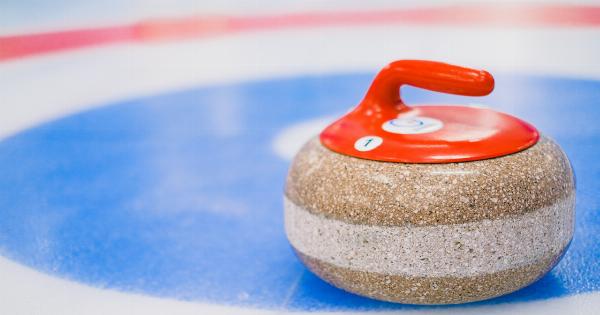Dealing with bruises and cuts can be painful and inconvenient. Whether caused by a simple accident or a more serious injury, these wounds can disrupt day-to-day activities and lead to discomfort.
While proper medical attention is essential for severe cases, there are several steps you can take to find fast pain relief for bruises and cuts at home. In this article, we will explore some effective remedies and techniques to alleviate the pain and promote healing.
Understanding Bruises
Bruises, also known as contusions, are caused by damage to blood vessels due to blunt force or trauma. They occur when small blood vessels under the skin break, resulting in the escape of blood.
Initially, bruises appear red or purple, gradually turning blue, green, and yellow as the body begins to absorb the blood and heal the damaged area. The pain associated with bruises is typically a result of inflammation and the accumulation of blood.
Treating Bruises
When it comes to treating bruises, the main goal is to reduce swelling, relieve pain, and speed up the healing process. Here are some effective methods:.
1. Cold Compress or Ice Pack
Applying a cold compress or an ice pack to the affected area can help constrict blood vessels and reduce blood flow to the injured site. This can effectively minimize swelling and alleviate pain.
Wrap ice cubes or a cold pack in a towel and apply it gently to the bruise for 15-20 minutes at a time. Repeat this process several times throughout the day for optimal results.
2. Elevation
When bruising occurs in a limb, elevating the affected area can assist in reducing blood flow and decreasing swelling. For instance, if you have a bruise on your leg, lie down and prop your leg on a pillow to elevate it above heart level.
This technique aids in draining excess fluid and promoting faster healing.
3. Medicinal Ointments or Creams
There are various over-the-counter ointments and creams available that can provide pain relief for bruises. These products often contain ingredients like arnica or bromelain, which are known for their anti-inflammatory properties.
Gently massaging the affected area with such creams can help stimulate blood flow, reduce swelling, and ease pain.
4. Warm Compress
After the initial 48 hours, applying a warm compress or a heating pad to the bruise can enhance blood circulation to the injured site. This increased blood flow can aid in the reabsorption of the trapped blood, accelerating healing and reducing pain.
However, ensure that the compress is not too hot to avoid burns or further damage to the skin.
5. Arnica Montana
Arnica montana is a homeopathic remedy known for its potential to alleviate bruising. It is available in various forms such as creams, gels, and pellets.
Applying arnica gel or cream to the bruise can help reduce inflammation, ease pain, and promote faster healing. However, it is important to use arnica products as per the instructions provided and consult a healthcare professional if necessary.
Understanding Cuts
Cuts, also known as lacerations, occur when the skin is torn or incised due to an injury. They can vary in severity, from minor cuts that can be treated at home to deeper cuts that may require medical attention.
Cuts can be painful and may bleed profusely depending on their depth and location.
Treating Cuts
Proper care is crucial when it comes to treating cuts in order to minimize pain, prevent infection, and promote healing. Here are some steps to help you with the process:.
1. Cleanse the Wound
The first step in treating any cut is to wash the wound thoroughly with mild soap and clean, running water. This will help remove dirt, debris, and bacteria from the affected area.
Using a clean cloth or sterile gauze, gently pat the wound dry without rubbing.
2. Apply an Antiseptic
After cleaning the wound, applying an antiseptic solution or ointment can help prevent infection. Antiseptics like hydrogen peroxide or povidone-iodine can be used to clean the wound further and eliminate any remaining bacteria.
Be sure to follow the instructions on the packaging and avoid using excessive quantities, as this may delay the healing process.
3. Protect with a Bandage
Once the wound is cleaned and dried, covering it with a sterile adhesive bandage or gauze pad is essential. This protects the cut from dirt, bacteria, and further injury while providing a barrier against infection.
Ensure that the bandage is not too tight, as it may restrict blood flow and delay healing.
4. Change the Dressing Regularly
It is important to change the dressing or bandage regularly, especially if it becomes dirty or wet. Keeping the wound clean and dry is crucial for preventing infection.
Follow the recommended frequency for changing the dressing as advised by healthcare professionals or the instructions on the packaging.
5. Pain Relief Medication
If the cut is causing significant pain, over-the-counter pain relief medications such as acetaminophen or ibuprofen can be taken to alleviate the discomfort.
However, ensure that you follow the recommended dosage and consult a healthcare professional if necessary. Do not use aspirin for pain relief, as it may increase bleeding.
Conclusion
While bruises and cuts can be bothersome, quick pain relief is achievable with the right approach. Remember to apply a cold compress or ice pack to bruises, elevate the affected area, and use medicinal ointments or creams.
Once the initial 48 hours have passed, switch to warm compresses and consider using arnica montana for additional relief. For cuts, ensure proper wound care by cleaning, applying antiseptic, protecting with a bandage, and changing the dressing regularly. Pain relief medications can also help manage discomfort.
However, it is crucial to seek medical attention for severe injuries and cuts that do not heal or show signs of infection.






























